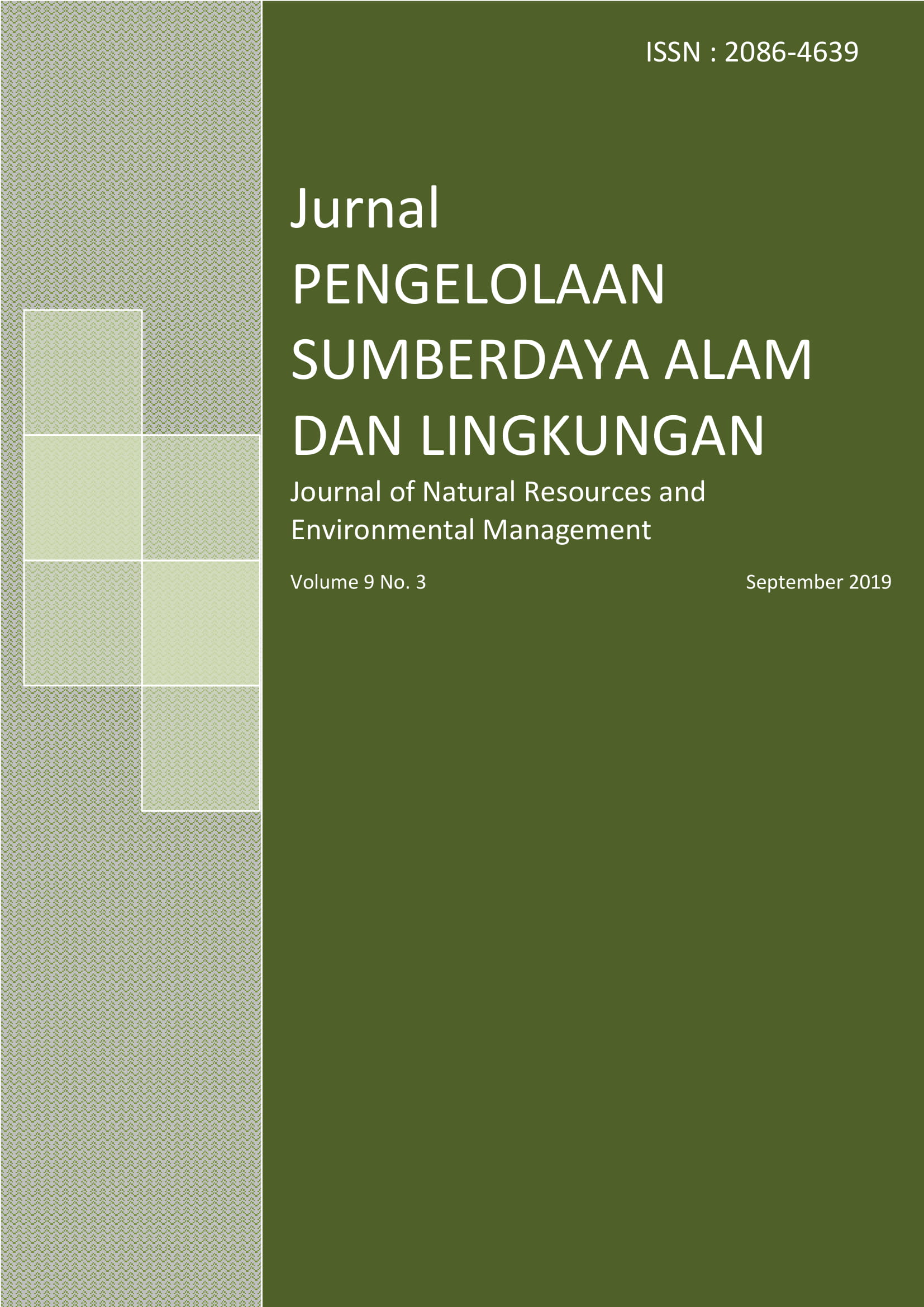Resiliensi nelayan terhadap ketersediaan sumberdaya perikanan di Kepulauan Karimunjawa
Abstract
References
Ainuddin S, Routray JK. 2012. Community Resilience Framework for an Earthquake Prone Area in Baluchistan. International Journal of Disaster Risk Reduction. 2: 25-36.
Berkes F, Colding J, Folke C (Ed). 2003. Navigating Social-Ecological Systems: Building Resilience for Complexity and Change. New York: Cambridge University Press.
Bunce L, Townsley P, Pomeroy R, Pollnac R. 2000. Socioeconomic Manual for Coral Reed Management. Australia: Australian Institute of Marine Science.
Burton CG. 2014. A Validation of metrics for community resiliensi to natural hazards and disasters using the recovery from Hurricane Katrina as a case study.
Carpenter S, Walker B, Anderies JM, Abel N. 2001. From Metaphor to measurement: R esilience of What to What? Ecosystem. 4: 765-781.
Carpenter SR, Westley F, Turner MG. 2005. Surrogates for Resilience of Social-Ecological Systems. Ecosystems. 8: 941 – 944.
Cumming G. 2008. Spatial Resilience in Social- Ecological Systems. Springer.
Cumming GS, Bernes G, Perz S, Schmink M, Sieving KE, Southworth J, Binford M, Holt RD, Stickler C, Holt TV. 2005. An Exploratory Framework for the Empirical Measurement of Resilience. Ecosystem. 8: 975 – 987.
Cumming GS, Collier J. 2005. Change and Identity in Complex Systems. Ecology and Society. 10(1): 29.
Cutter SL, Ash KD, Emrich CT. 2014. The Geographies of Coudidymmunity Disaster Resilience. Global Environmental Change. 29: 65 – 77.
Cutter SL, Barnes L, Berry M, Burton C, Evans E, Tate E. 2008. A Place based Model for understanding community resilience to natural Disasters. Global Environment Change. 18(4): 598 – 606.
Cutter SL, Burton CG, Emrich CT. 2010. Disaster Resilience Indicators for Benchmarking Baseline Conditions. Journal of homeland Security and Emergency Management. 7(1): 1- 22.
Holling CS. 1973. Resilience and Syability of Ecological systems. Annual review of Ecologycal and Systematics. 4: 1-23.
Ismane MA, Kusmana C, Gunawan A, Affandi R, Suwardi S. 2018. Keberlanjutan Pengelolaan Kawasan Konservasi Penyu di Pantai Pangumbahan, Sukabumi, Jawa Barat. J. Pengelolaan Sumberdaya Alam dan Lingkungan. 8(1): 36-43.
Joerin J, Shaw R, Takeuchi Y, Krishnamurthy R. 2012. Assessing Comunity Resilience to Community Resilience to Climate-related Disaster in Chennai, India. International Journal of Disaster Risk Reduction. 1: 44-54.
Kusumastuti RD, Viveritam ZA, Husodo L, Suardi DN, Danarsari, 2014. Developing a resilience index towards natural disasters in Indonesia. International Journal of Disaster Risk Reduction. 10: 327 – 340.
Kusumawati I, Hsiang-Wen H. 2015. Key faktors for Successful Management of Marine Protected areas: A comparison of Stakeholders’ Perception of Two MPAs in Weh Island, Sabang, Aceh, Indonesia. Marine Policy. 51: 465 – 475.
Loomis DK, Paterson SK. 2014. Human dimension indicators of coastal ecosystem services: A hierarchical Perspective. J. Ecol Indicators. 44: 63-68.
Marshall NA, Fenton DM, Marshall PA, Sutton SG. 2007. How Resource Dependency Can Influence Social Resilience within a Primary Resource Industry. Rural Sociology. 72(3): 359 – 390.
Marshall NA, Marshall PA, Abdulla A, Rouphael T. 2010. The Links Between Resource Dependency and Attitude of Commercial Fishers to Coral Reef Conservation in the Red Sea. AMBIO. 39: 305 – 313.
Mayunga JS. 2007. Understanding and Applying the Concept of Community Disaster Resilience: A capital-based Approach. A draft working paper prepared for the summer academy for social vulnerability and resilience building, 22 – 28 July 2007, Munich, Germany.
Meyer MA, Booker JM. 2001. Eliciting and Analyzing Expert Judgement: A Practical Guide, ASA-SIAM Series on Statistics and Applied Probability.
Morrow B. 2008. Community Resilience: A Social Justice Perspective, (CARRI Research Report 4), Community and Regional Resilience Institute, Oak Ridge, 2008.
Norris FH, Stevens SP, Pfefferbaum BP, Wyche KF, Pfefferbaum RL. 2008. Community Resilience as a Metaphor, Theory, Set of Capacities, and Strategy for Disaster Readiness. J. Community Psychol. 41: 127–150.
Authors
Authors who publish with this journal agree to the following terms:
- Authors retain copyright and grant the journal right of first publication with the work simultaneously licensed under a Creative Commons Attribution License that allows others to share the work with an acknowledgement of the work's authorship and initial publication in this journal.
- Authors are able to enter into separate, additional contractual arrangements for the non-exclusive distribution of the journal's published version of the work (e.g., post it to an institutional repository or publish it in a book), with an acknowledgement of its initial publication in this journal.
- Authors are permitted and encouraged to post their work online (e.g., in institutional repositories or on their website) prior to and during the submission process, as it can lead to productive exchanges, as well as earlier and greater citation of published work (See The Effect of Open Access).






